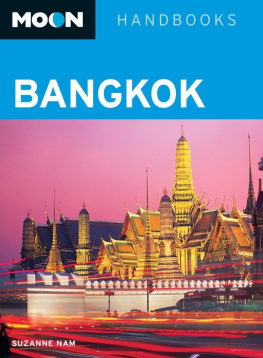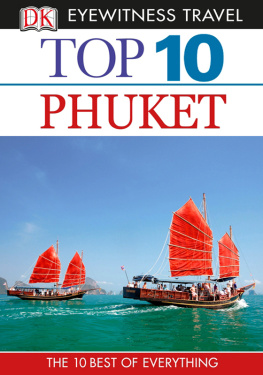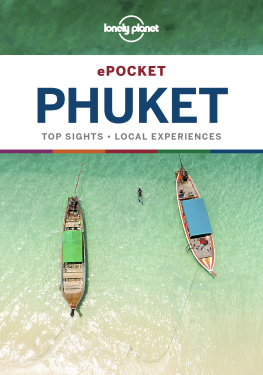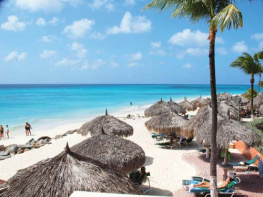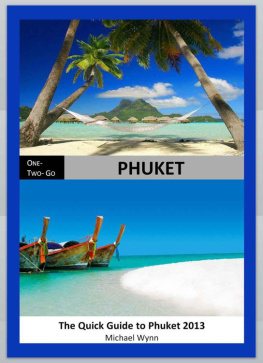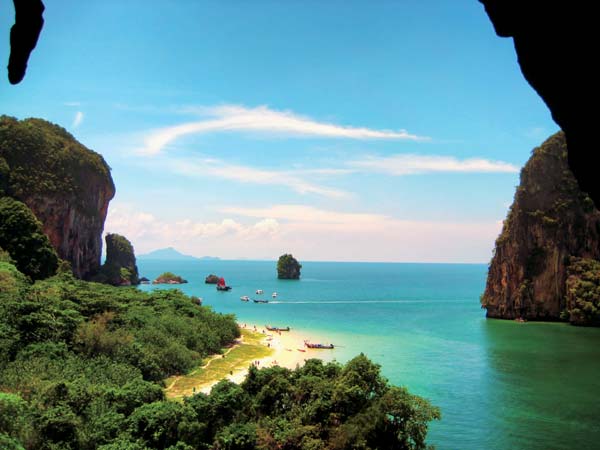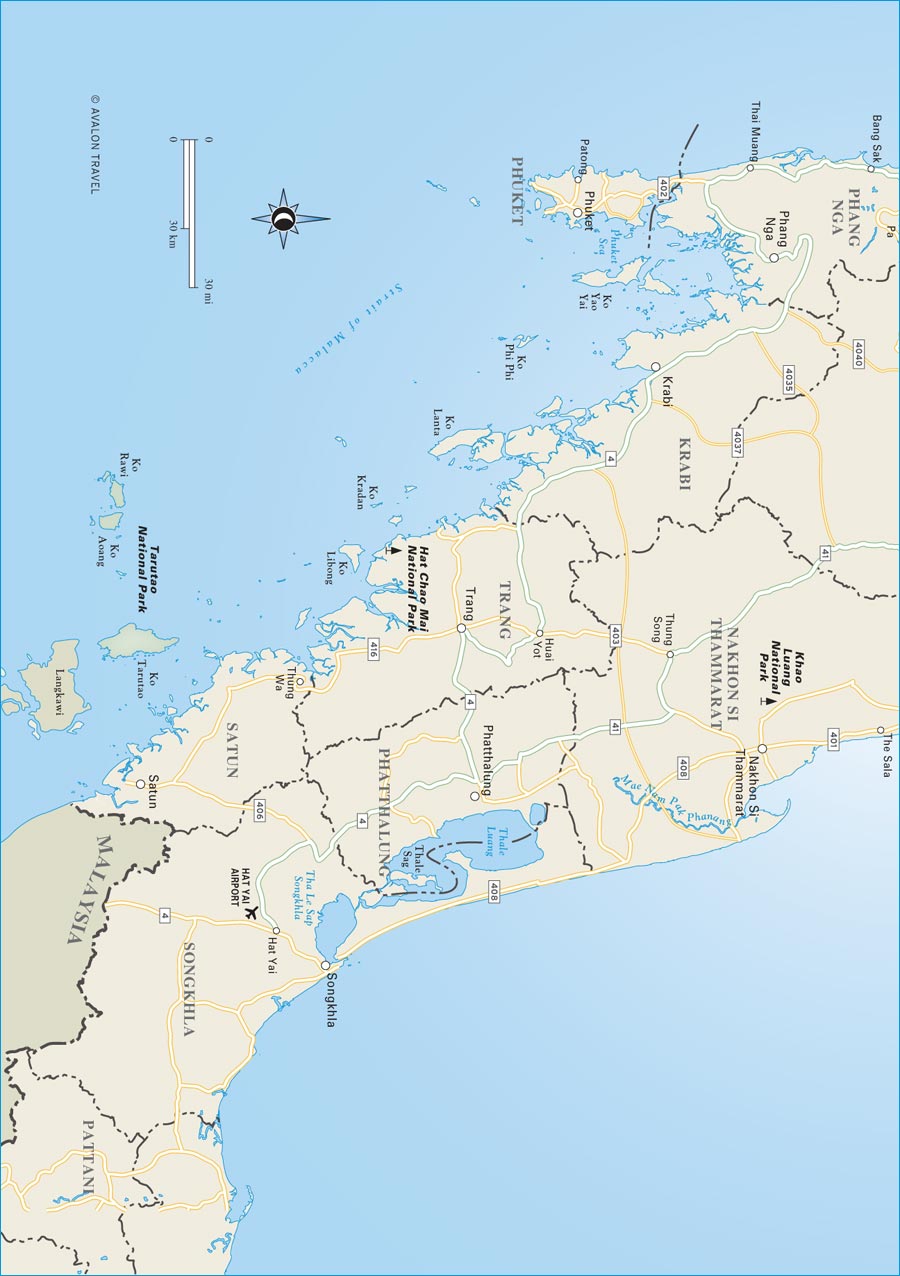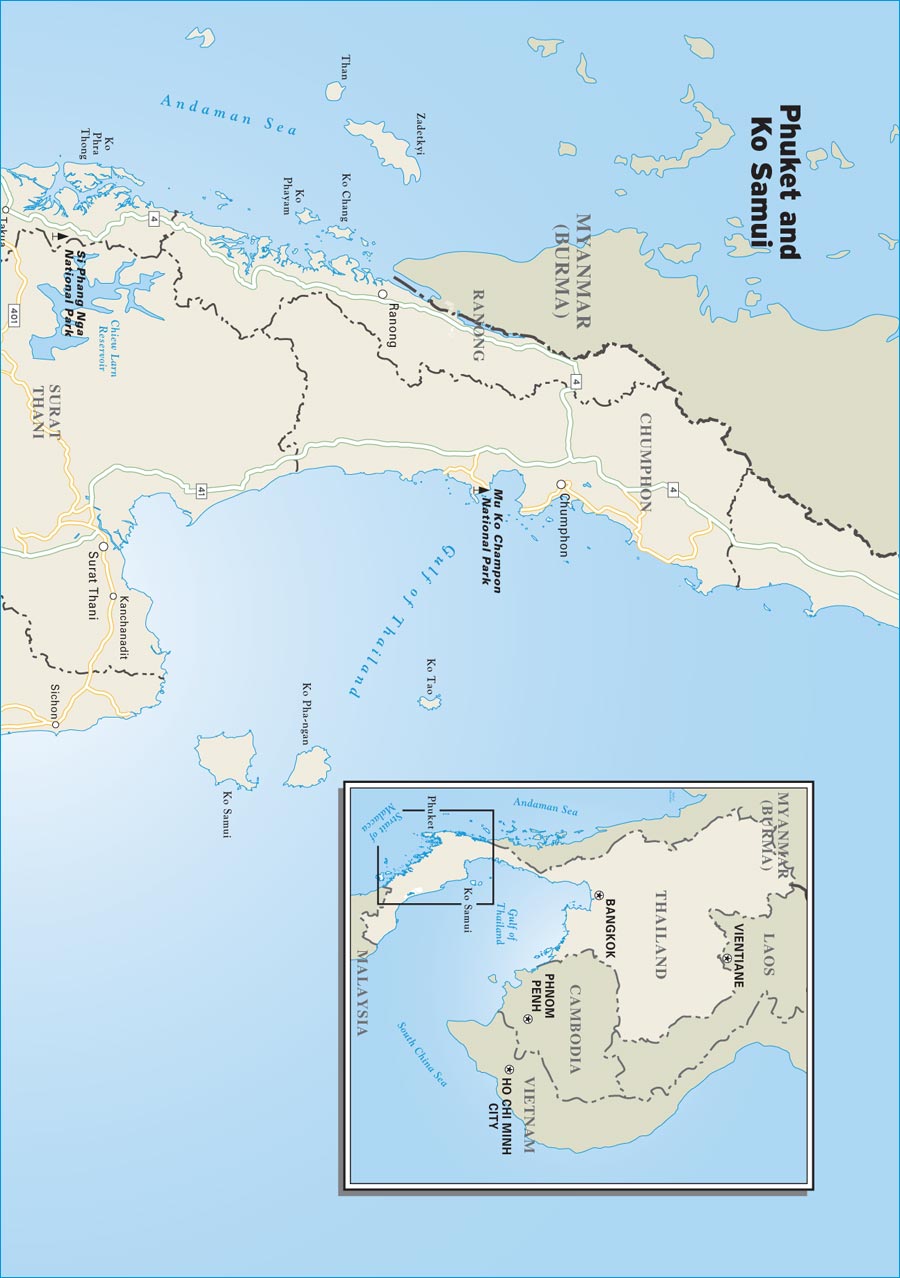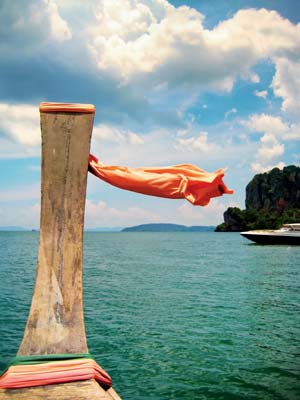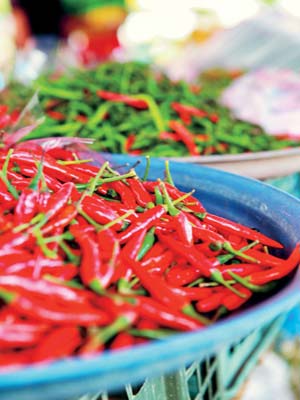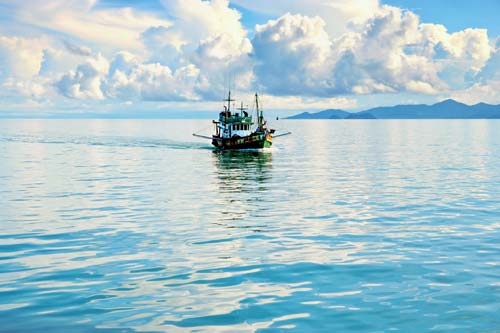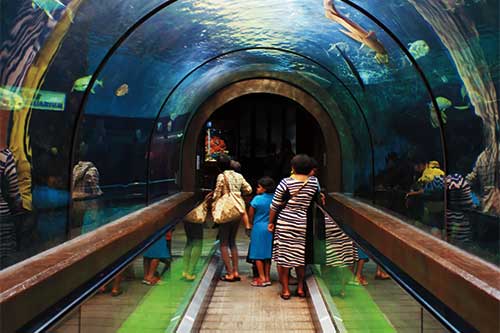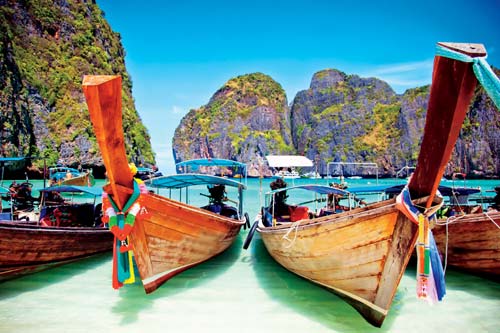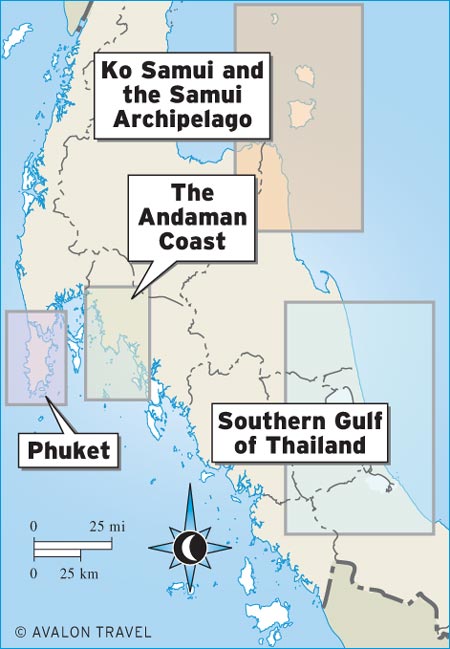PHUKET & KO SAMUI
SUZANNE NAM
Phuket and Ko Samui are Thailands most popular resort islands, and for good reason. The azure water and soft sand are the stuff of legends. Palm trees, lush green rainforests, paddy fields, and mountain ranges are never far away.
Youll also find reasonably priced accommodations, a good variety of places to eat, drink, and shop, and plenty of outdoor activities that take advantage of the stunning natural landscape. Here you can sleep in a thatched roof bungalow, hike through the lush forests of a national park, or snorkel in the clear blue waters of the Andaman Sea, all in the same day.
Though Thai is a tough language to master on vacation, and the script looks completely undecipherable to most Westerners, you will find at least a little English spoken in almost every corner of Phuket and Ko Samui (as well as Russian and Chinese). With so many tourists visiting, youll never be far from someone who can help you find what you need or where youre going.
More than anything else, youll find paradise. With a little bit of effort, you can discover that tranquil patch of sand under a coconut tree that youve been dreaming about.
Where to Go
Phuket
Phuket is Thailands number one beach destination, and for good reason. The countrys largest island has almost a dozen beautiful beaches covered with soft sand and backed by swaying palm trees. The Andaman Sea, with its warm, turquoise waters, is beautiful and inviting. But if you look past the beaches for a moment it becomes clear why Phuket is so popular. There are hundreds of restaurants to eat at, over a thousand hotels, resorts, and guesthouses to choose from, and plenty of shops to peruse.
The Andaman Coast
The peninsulas west coast is undoubtedly the most beautiful region in the country, with postcard-perfect islands and lush rainforests and mountain ranges. The warm, clear waters offer excellent opportunities to snorkel and scuba dive, with stunning limestone rock formations, waterfalls, and caves to explore. Travel north or south from Phuket and youll find some of the best beaches in the world. The rest of the region is still supported by agriculture and a thriving fishing industry, and it remains relatively undeveloped.
Ko Samui and the Samui Archipelago
Ko Samui, Ko Pha-Ngan, and Ko Tao, once a group of barely inhabited islands known better for coconut trees than anything else, now provide visitors with everything from luxury resorts to thatched beach bungalows. But despite their conveniences, even Samui still feels like a laid-back beach destination. If you want a relaxing beach vacation where you can enjoy good food and great accommodations, head to Samui. Party animals will enjoy Ko Pha-Ngans famous full-moon raves. And if youre a diver, or aspire to be one, head to Ko Tao for some of the best diving in the region.
Southern Gulf of Thailand
Coconut groves, rubber plantations, and forested mountains characterize Thailands lower southern gulf. Once a bustling entrept, this region is still a significant commercial center for southern Thailand. The largest province, Nakhon Si Thammarat, offers a tutorial of the regions cultural history. The remains of the ancient walled city of Ligor, Buddhist temples, Hindu shrines, and Muslim mosques are all easily accessible here.
When to Go
In general, Thailands best weather is in the cool season, from November to February. This is when temperatures drop into the 70s and the humidity becomes far less oppressive. This is the most popular time to visit; youll see plenty of other travelers and peak pricing, especially around Christmas or New Years. Although people visit Thailand year-round, the low season is generally July-October, when most of the country is subject to monsoon rains. Dont write off this season completely, as it doesnt rain all day or even every day. If you dont mind a few rainy days, youll pay significantly less for accommodations, and most destinations will be far less crowded. The hot season (March-May) has higher temperatures and lots of humidity. If you dont mind the heat, there are fewer visitors and lower prices.
The best time to go to Phuket is November-March, when the weather cools off a little and the Andaman Sea is at its calmest. This is peak tourist season, though, so expect lots of other international tourists sharing the beach with you. All accommodations prices in this guide are based on peak season. In the two-week period starting before Christmas and ending January 2, most hotels and guesthouses will tack on an additional 20 percent or more above peak prices. Even with these higher prices, the choicest places will often be fully booked months in advance. If you are in the area during Christmas or New Years, many resorts will also require that you pay for a compulsory holiday dinner.
May-October is Phukets rainy season, and while it rains often, the showers generally end quickly. If you can tolerate getting a little wet, it can be pleasantly cool, the island is a little quieter, and prices can be half of peak season. This is the best time for surfing, as the waves can be quite dramatic. Divers and snorkelers should go during high season, when visibility is at its best.
In Samui, there is increased rain from July to November, but the wettest months are September, October, and Novembermaking for a short and late rainy season.


